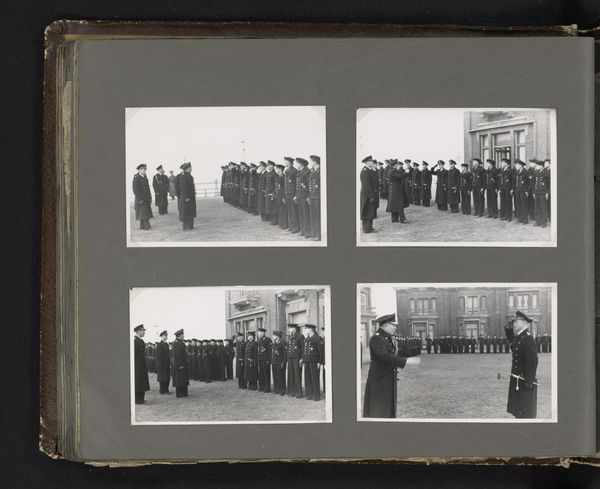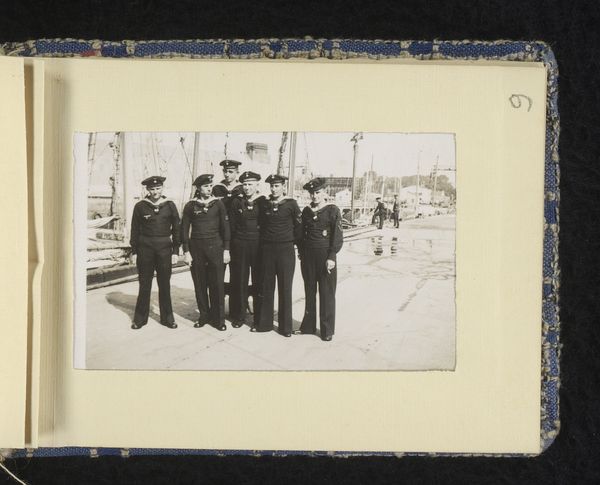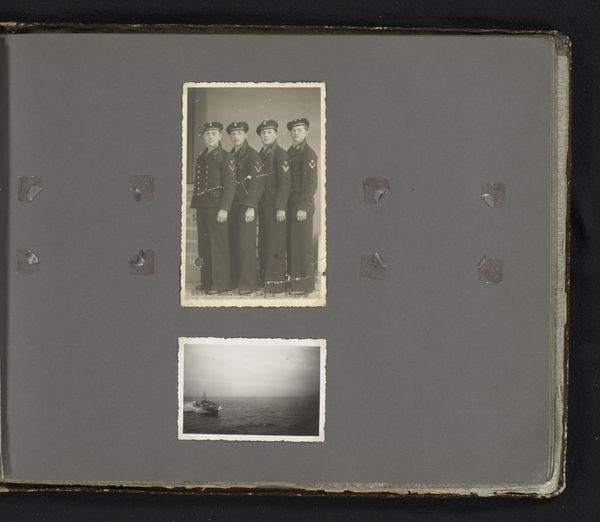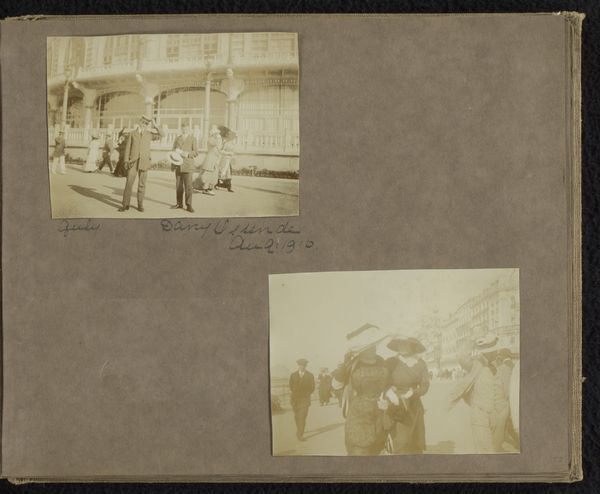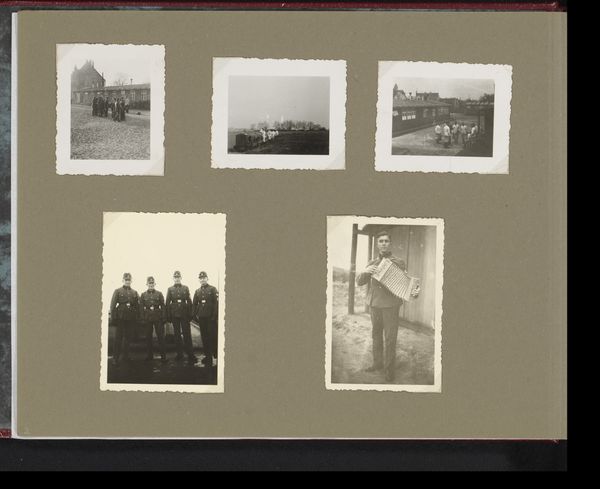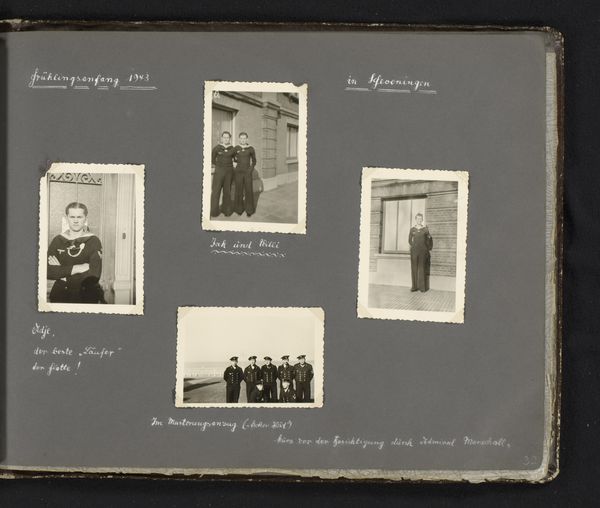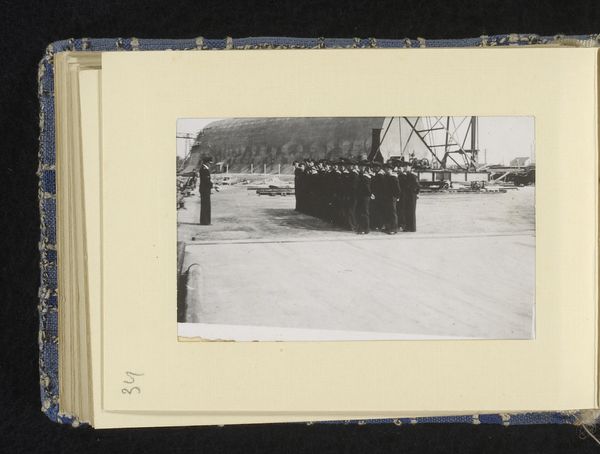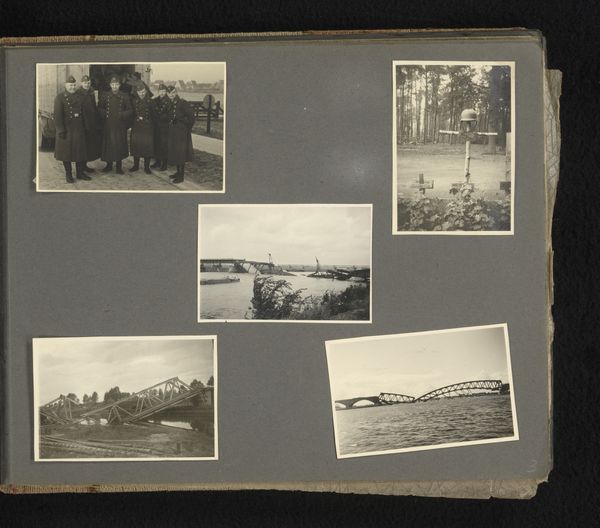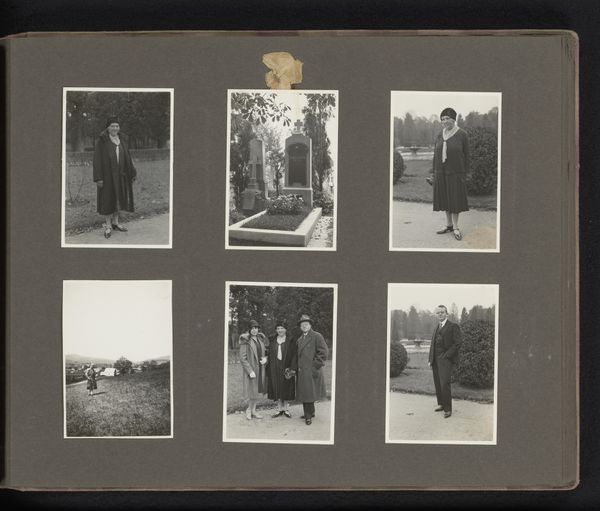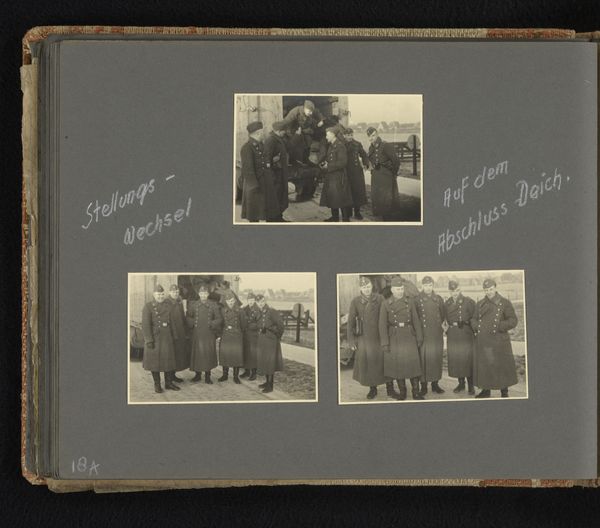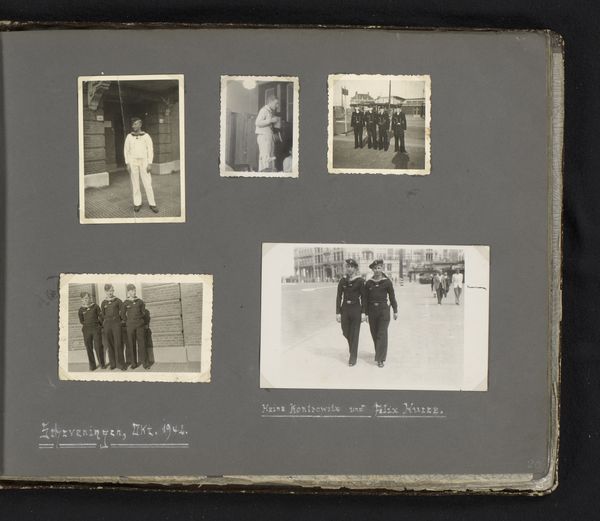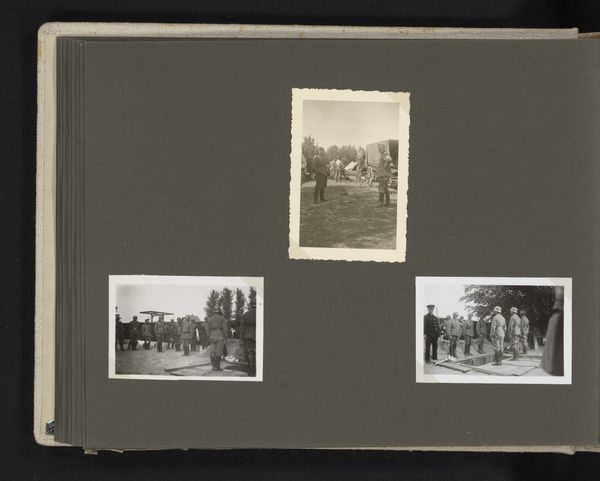
photography, gelatin-silver-print
#
portrait
#
photography
#
desaturated colour
#
group-portraits
#
gelatin-silver-print
#
paper medium
#
modernism
#
realism
Dimensions: height 130 mm, width 90 mm, height 272 mm, width 340 mm
Copyright: Rijks Museum: Open Domain
Curator: Here we have a gelatin-silver print, probably dating from 1943 or 1944, titled "Bezoek van admiraal Wilhelm Marschall," which translates to "Visit of Admiral Wilhelm Marschall." Editor: My first impression is that it feels somber, even a little chilling. The desaturated tones certainly contribute, but there’s also a sense of distance, both in the composition and the expressions of these figures. Curator: Indeed. The images form a part of the visual propaganda connected with Nazi Germany's war at sea, particularly focusing on Admiral Marschall, who briefly commanded the German fleet during the Second World War. Looking closely, we see group portraits along with one of a port infrastructure; all serving a particular message to the public. Editor: I'm immediately drawn to the paper medium, how the gelatin silver process renders the details of the uniforms. The production is itself, arguably, integral to how such portraits function socially – the reproducibility, the intended mass consumption of the images... Curator: Absolutely. And how the aesthetic of realism is employed here. It's interesting how photographic realism intertwines with modernist aesthetics to construct a narrative of power and control during this period. I'm wondering about how ideas of masculinity are embedded into this type of military portraiture, which contributes to the political narrative the image creates. Editor: Notice how each element within the photograph works in service of a clearly articulated purpose. This goes to the function of the photographs themselves - images as a tool within specific mechanisms of power during wartime. Curator: Thinking about its social context, I consider the complicated ethics surrounding images that seem to present a glamorized version of historical figures like Marschall, figures complicit in acts of injustice. How do we critically view such historical material without sanitizing its origins or the complex issues that it represents? Editor: The photograph here presents itself as an industrial artifact: created with specific materials, through an established technical process, for ultimate use as documentation of a particular moment for dissemination to the broader German population. Looking at these specific material circumstances underscores the social role photographs of this kind took on within the historical moment of their production. Curator: Viewing it through the lens of today, it challenges us to grapple with the legacy and impact of these representations. Editor: A fascinating illustration of materiality shaping narrative.
Comments
No comments
Be the first to comment and join the conversation on the ultimate creative platform.
